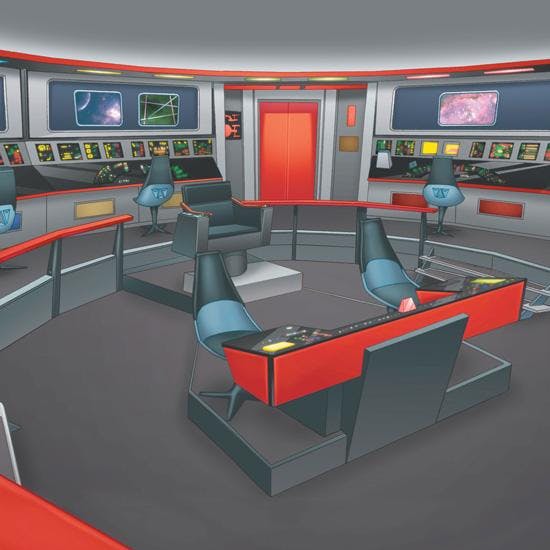Published Sep 19, 2015
40 Years Ago: Star Trek And Colorforms
40 Years Ago: Star Trek And Colorforms
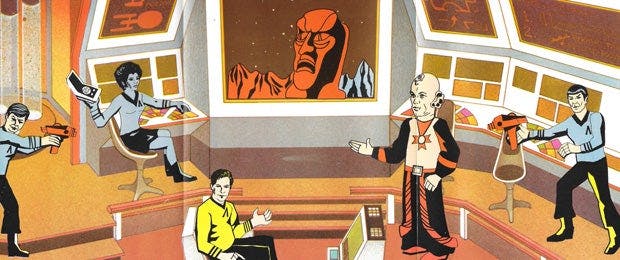
Before the era of photo editing software and picture sticker apps, there were Colorforms. Invented in 1951 by artists Harry and Patricia Kislevitz, the plastic, removable, stick-ons became toy icons eventually selling more than a billion boxes featuring licensed characters as diverse as Popeye, the Sweathogs of Welcome Back, Kotter, My Little Pony and DC Superheroes. Colorforms were also part of an important era of Star Trek history when the franchise was inching its way back to the mainstream.
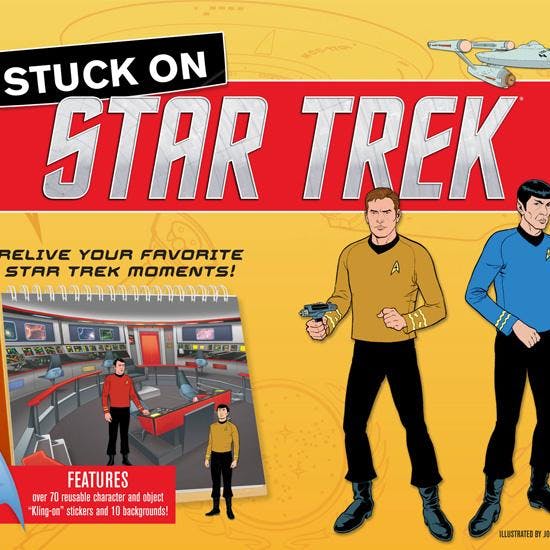
Three years after its cancellation, Star Trek was returning to the popular consciousness. In January 1972, the first convention with guests from the show was held in New York. In 1973, one of TV’s most popular shows Sanford and Son revealed that junkman Fred Sanford and his buddy Grady were Star Trek fans watching the reruns of the show on Fred’s forever malfunctioning TV. 1976 was the year of both the famous John Belushi Saturday Night Live skit “The Last Voyage of the Starship Enterprise” on May 29th, and the christening of the NASA Space Shuttle Enterprise on September 17th. Star Trek: The Animated Series had led to new toys, including the beloved MEGO Corp. toy line starting in 1974. And then there was Colorforms, which released their Star Trek Adventure Set in 1975.
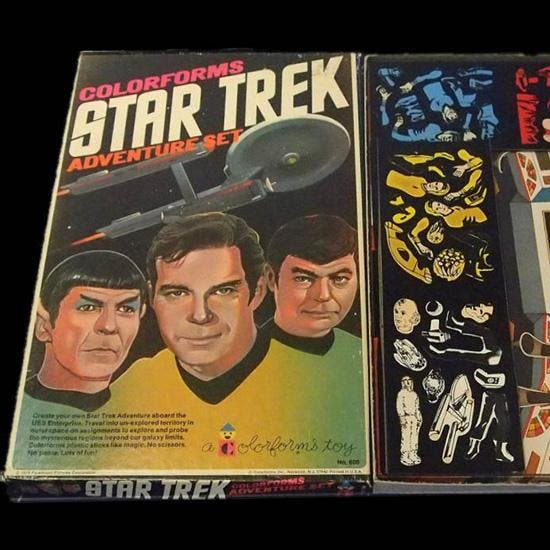
A mainstay in many homes, Colorforms allowed kids to use their creativity to design scenes from favorite TV shows and cartoons with stick-ons that would be removed and reused. The fact that a company as big as Colorforms was interested in Star Trek, a show that had been at that point cancelled for six years - and that Trek joined other popular Colorform licenses like Happy Days (then the number #1 rated U.S. TV show) - spoke volumes about the renewed interest in Star Trek.
Colorforms was famous for its excellent and attractive box art, and the Star Trek Adventure Set was no exception. Inside, kids found repositionable stick-ons of Kirk, Spock, McCoy, Uhura and Dr. Sevrin from “The Way to Eden,” various other aliens, and some Trek tech. While Dr. Sevrin may be considered an odd choice when other, more-famous adversaries could have been selected, the design of the character was certainly distinctive, memorable and kid-friendly. The stick-ons themselves were mostly faithful, although Uhura’s all-blue coloring is a glaring design element flaw (it was common for Colorforms to use all one color for its stick-ons to save production costs and help keep set prices to a minimum). The U.S.S. Enterprise bridge play area tries to combine as many elements together as possible because of space limitations – including a transporter pad and Captain’s chair/helm that does not face view screen. Of course, as kids, we had fun with the Colorforms anyways, as our imaginations were inspired by the possible combinations and permutations.
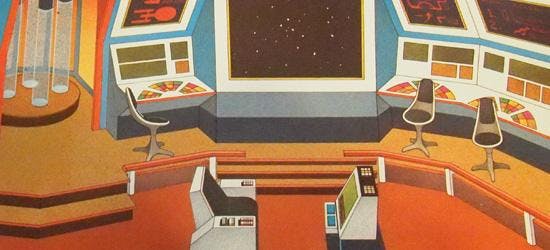
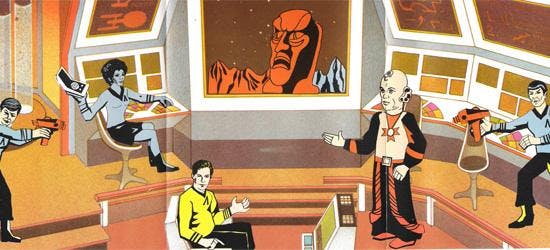
The influence of Colorfoms continues to be felt today. The company still manufactures adventure sets based on popular properties. A 2013 book by artist Joe Corroney, published by Universe, called Stuck on Star Trek, has a Colorform vibe, although its art has more faithful and varied designs. Another example of Colorforms influence is the inclusion of the Star Trek Adventure Set among the holdings from the International Cartoon Art Collection at the Ohio State University Billy Ireland Cartoon Library and Museum
Colorform’s Star Trek Adventure Set may be 40 years old, but it lives on in the memories of a generation of fans who created their own adventures as we waited for new television episodes or a movie. As we wait for a new Trek film in 2016, why not break out the old Colorforms sets if you still have them, and boldly go once again?
